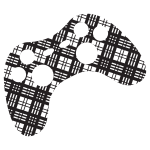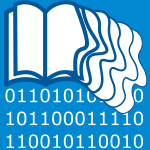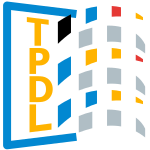Tag #category theory
230 papers:
 CSL-2020-CockettCGLMPP
CSL-2020-CockettCGLMPP - Reverse Derivative Categories (JRBC, GSHC, JG, JSPL, BM, GDP, DP), p. 16.
 CSL-2020-CockettLL #algebra #difference
CSL-2020-CockettLL #algebra #difference- Tangent Categories from the Coalgebras of Differential Categories (JRBC, JSPL, RBBLW), p. 17.
 ICML-2019-BateniCEFMR #optimisation
ICML-2019-BateniCEFMR #optimisation- Categorical Feature Compression via Submodular Optimization (MB, LC, HE, TF, VSM, AR), pp. 515–523.
 ICML-2019-YinYZ #named
ICML-2019-YinYZ #named- ARSM: Augment-REINFORCE-Swap-Merge Estimator for Gradient Backpropagation Through Categorical Variables (MY, YY, MZ), pp. 7095–7104.
 POPL-2019-Mellies #combinator #game studies #scheduling #semantics
POPL-2019-Mellies #combinator #game studies #scheduling #semantics- Categorical combinatorics of scheduling and synchronization in game semantics (PAM), p. 30.
 PPDP-2019-ValliappanR #combinator #exponential
PPDP-2019-ValliappanR #combinator #exponential- Exponential Elimination for Bicartesian Closed Categorical Combinators (NV, AR), p. 13.
 ESOP-2019-SakayoriT #π-calculus
ESOP-2019-SakayoriT #π-calculus- A Categorical Model of an i/o-typed π-calculus (KS, TT), pp. 640–667.
 ICPC-2018-BeyerM0P #automation #stack overflow
ICPC-2018-BeyerM0P #automation #stack overflow- Automatically classifying posts into question categories on stack overflow (SB, CM, MP0, MDP), pp. 211–221.
 FSCD-2018-ForestM
FSCD-2018-ForestM - Coherence of Gray Categories via Rewriting (SF, SM), p. 16.
 FSCD-2018-Lemay #algebra
FSCD-2018-Lemay #algebra- Lifting Coalgebra Modalities and IMELL Model Structure to Eilenberg-Moore Categories (JSPL), p. 20.
 CIKM-2018-XuWCWM #detection #set
CIKM-2018-XuWCWM #detection #set- Exploring a High-quality Outlying Feature Value Set for Noise-Resilient Outlier Detection in Categorical Data (HX, YW, LC, YW, XM), pp. 17–26.
 ICML-2018-RuizTDB #probability #scalability
ICML-2018-RuizTDB #probability #scalability- Augment and Reduce: Stochastic Inference for Large Categorical Distributions (FJRR, MKT, ABD, DMB), pp. 4400–4409.
 POPL-2018-CapriottiK
POPL-2018-CapriottiK - Univalent higher categories via complete Semi-Segal types (PC, NK), p. 29.
 CSL-2018-BehrS #algebra
CSL-2018-BehrS #algebra- Rule Algebras for Adhesive Categories (NB, PS), p. 21.
 SANER-2017-NewmanACM #identifier #source code
SANER-2017-NewmanACM #identifier #source code- Lexical categories for source code identifiers (CDN, RSA, MLC, JIM), pp. 228–239.
 FSCD-2017-AhrensL
FSCD-2017-AhrensL - Displayed Categories (BA, PLL), p. 16.
- ICFP-2017-Elliott17a #compilation
- Compiling to categories (CE), p. 27.
 CIKM-2017-HeWJ #modelling #relational #topic
CIKM-2017-HeWJ #modelling #relational #topic- Incorporating the Latent Link Categories in Relational Topic Modeling (YH, CW, CJ), pp. 1877–1886.
 CIKM-2017-PangXCZ #detection #learning
CIKM-2017-PangXCZ #detection #learning- Selective Value Coupling Learning for Detecting Outliers in High-Dimensional Categorical Data (GP, HX, LC, WZ), pp. 807–816.
 CIKM-2017-RahmanAKD #performance
CIKM-2017-RahmanAKD #performance- Efficient Computation of Subspace Skyline over Categorical Domains (MFR, AA, NK, GD0), pp. 407–416.
 MoDELS-2017-TaentzerSSC #framework #product line
MoDELS-2017-TaentzerSSC #framework #product line- Transformations of Software Product Lines: A Generalizing Framework Based on Category Theory (GT, RS, DS, MC), pp. 101–111.
 CSL-2017-AhrensLV #type system
CSL-2017-AhrensLV #type system- Categorical Structures for Type Theory in Univalent Foundations (BA, PLL, VV), p. 16.
 CSL-2017-CockettL #calculus
CSL-2017-CockettL #calculus- Integral Categories and Calculus Categories (JRBC, JSL), p. 17.
 CSL-2017-HeerdtS0 #automaton #framework #learning #named
CSL-2017-HeerdtS0 #automaton #framework #learning #named- CALF: Categorical Automata Learning Framework (GvH, MS, AS0), p. 24.
 SANER-2016-ChenGX #library #mining #relational #word
SANER-2016-ChenGX #library #mining #relational #word- Mining Analogical Libraries in Q&A Discussions - Incorporating Relational and Categorical Knowledge into Word Embedding (CC, SG, ZX), pp. 338–348.
 SANER-2016-MachoMP #commit #predict #source code
SANER-2016-MachoMP #commit #predict #source code- Predicting Build Co-changes with Source Code Change and Commit Categories (CM, SM, MP0), pp. 541–551.
 FSCD-2016-Hamana #algebra #higher-order #normalisation
FSCD-2016-Hamana #algebra #higher-order #normalisation- Strongly Normalising Cyclic Data Computation by Iteration Categories of Second-Order Algebraic Theories (MH), p. 18.
 FSCD-2016-Timany0 #coq
FSCD-2016-Timany0 #coq- Category Theory in Coq 8.5 (AT, BJ0), p. 18.
 DiGRA-FDG-2016-LimLH #approach #bottom-up #clustering #image #social #using
DiGRA-FDG-2016-LimLH #approach #bottom-up #clustering #image #social #using- Discovering Social and Aesthetic Categories of Avatars: A Bottom-Up Artificial Intelligence Approach Using Image Clustering (CUL, AL, DFH).
 ECIR-2016-WangME #fine-grained #image #using #visual notation
ECIR-2016-WangME #fine-grained #image #using #visual notation- Harvesting Training Images for Fine-Grained Object Categories Using Visual Descriptions (JW, KM, ME), pp. 549–560.
 ECIR-2016-ZhangDW #case study #learning #multi #predict
ECIR-2016-ZhangDW #case study #learning #multi #predict- Deep Learning over Multi-field Categorical Data - - A Case Study on User Response Prediction (WZ0, TD, JW0), pp. 45–57.
 ICML-2016-ChenQ #clustering
ICML-2016-ChenQ #clustering- Clustering High Dimensional Categorical Data via Topographical Features (CC0, NQ), pp. 2732–2740.
 MoDELS-2016-RabbiLY #approach #game studies #metamodelling #towards
MoDELS-2016-RabbiLY #approach #game studies #metamodelling #towards- Towards a categorical approach for meta-modelling epistemic game theory (FR, YL, ICY), pp. 57–64.
 DRR-2015-NagyEKS #clustering #web
DRR-2015-NagyEKS #clustering #web- Clustering header categories extracted from web tables (GN, DWE, MSK, SCS).
 CHI-PLAY-2015-McMahonWJ #challenge #game studies #process
CHI-PLAY-2015-McMahonWJ #challenge #game studies #process- From Challenges to Activities: Categories of Play in Videogames (NM, PW, DMJ0), pp. 637–642.
 GCM-2015-LoweT #algebra
GCM-2015-LoweT #algebra- Single-Pushout Rewriting of Partial Algebras (ML, MT), pp. 82–96.
 GCM-2015-PeuserH #composition #graph
GCM-2015-PeuserH #composition #graph- Attribution of Graphs by Composition of M, N-adhesive Categories (CP, AH), pp. 66–81.
 ICGT-2015-Lowe #graph grammar #polymorphism
ICGT-2015-Lowe #graph grammar #polymorphism- Polymorphic Sesqui-Pushout Graph Rewriting (ML), pp. 3–18.
 ICEIS-v1-2015-CarboneraA #algorithm #clustering #named
ICEIS-v1-2015-CarboneraA #algorithm #clustering #named- CBK-Modes: A Correlation-based Algorithm for Categorical Data Clustering (JLC, MA), pp. 603–608.
 ICML-2015-GalCG #estimation #multi #process
ICML-2015-GalCG #estimation #multi #process- Latent Gaussian Processes for Distribution Estimation of Multivariate Categorical Data (YG, YC, ZG), pp. 645–654.
 ICML-2015-LeeY #predict #strict
ICML-2015-LeeY #predict #strict- Boosted Categorical Restricted Boltzmann Machine for Computational Prediction of Splice Junctions (TL, SY), pp. 2483–2492.
 KDD-2015-Kifer #on the
KDD-2015-Kifer #on the- On Estimating the Swapping Rate for Categorical Data (DK), pp. 557–566.
 RecSys-2015-GuoD #approach #bias
RecSys-2015-GuoD #approach #bias- Uncovering Systematic Bias in Ratings across Categories: a Bayesian Approach (FG, DBD), pp. 317–320.
 RecSys-2015-KaragiannakisGS #automation #recommendation
RecSys-2015-KaragiannakisGS #automation #recommendation- OSMRec Tool for Automatic Recommendation of Categories on Spatial Entities in OpenStreetMap (NK, GG, DS, SA), pp. 337–338.
 SIGIR-2015-ZhangC #correlation #named #recommendation #social
SIGIR-2015-ZhangC #correlation #named #recommendation #social- GeoSoCa: Exploiting Geographical, Social and Categorical Correlations for Point-of-Interest Recommendations (JDZ, CYC), pp. 443–452.
 ECMFA-2015-DiskinMC #imperative #model management #visual notation
ECMFA-2015-DiskinMC #imperative #model management #visual notation- A Model Management Imperative: Being Graphical Is Not Sufficient, You Have to Be Categorical (ZD, TSEM, KC), pp. 154–170.
 FoSSaCS-2015-Vakar #framework #linear #logic #semantics
FoSSaCS-2015-Vakar #framework #linear #logic #semantics- A Categorical Semantics for Linear Logical Frameworks (MV), pp. 102–116.
 LICS-2015-OHearn #facebook #logic
LICS-2015-OHearn #facebook #logic- From Categorical Logic to Facebook Engineering (PWO), pp. 17–20.
 HT-2014-ShuaiLXWG #twitter
HT-2014-ShuaiLXWG #twitter- Comparing the pulses of categorical hot events in Twitter and Weibo (XS, XL, TX, YW, CG), pp. 126–135.
 PODS-2014-PatilTSNV #query
PODS-2014-PatilTSNV #query- Categorical range maxima queries (MP, SVT, RS, YN, JSV), pp. 266–277.
 ICGT-2014-DanosHHS
ICGT-2014-DanosHHS - Reversible Sesqui-Pushout Rewriting (VD, TH, RHZ, SS), pp. 161–176.
 ICGT-2014-HaymanH #on the
ICGT-2014-HaymanH #on the- On Pushouts of Partial Maps (JH, TH), pp. 177–191.
 CSCW-2014-AndreKD #clustering #synthesis
CSCW-2014-AndreKD #clustering #synthesis- Crowd synthesis: extracting categories and clusters from complex data (PA, AK, SPD), pp. 989–998.
 CIKM-2014-GrbovicHKM #email #how
CIKM-2014-GrbovicHKM #email #how- How Many Folders Do You Really Need?: Classifying Email into a Handful of Categories (MG, GH, ZSK, YM), pp. 869–878.
 ICPR-2014-LiuWCL #automation #image #learning
ICPR-2014-LiuWCL #automation #image #learning- Automatic Image Attribute Selection for Zero-Shot Learning of Object Categories (LL, AW, SC, BCL), pp. 2619–2624.
 KDD-2014-HeFKMP #clustering
KDD-2014-HeFKMP #clustering- Relevant overlapping subspace clusters on categorical data (XH, JF, BK, STM, CP), pp. 213–222.
 KDIR-2014-DomeniconiMPS #classification
KDIR-2014-DomeniconiMPS #classification- Cross-domain Text Classification through Iterative Refining of Target Categories Representations (GD, GM, RP, CS), pp. 31–42.
 KEOD-2014-HlomaniS #data-driven #evaluation #framework #metric #ontology
KEOD-2014-HlomaniS #data-driven #evaluation #framework #metric #ontology- Data-driven Diachronic and Categorical Evaluation of Ontologies — Framework, Measure, and Metrics (HH, DAS), pp. 56–66.
 SIGIR-2014-ChenJZBZSY #recommendation
SIGIR-2014-ChenJZBZSY #recommendation- Does product recommendation meet its waterloo in unexplored categories?: no, price comes to help (JC, QJ, SZ, SB, LZ, ZS, YY), pp. 667–676.
 SAC-2014-IencoBPP #data type #detection #evolution
SAC-2014-IencoBPP #data type #detection #evolution- Change detection in categorical evolving data streams (DI, AB, BP, PP), pp. 792–797.
 FASE-2014-LoweKS #graph transformation #polymorphism
FASE-2014-LoweKS #graph transformation #polymorphism- Polymorphic Single-Pushout Graph Transformation (ML, HK, CS), pp. 355–369.
 MSR-2013-SouzaM #metric #question
MSR-2013-SouzaM #metric #question- Do software categories impact coupling metrics? (LBLdS, MdAM), pp. 217–220.
 CIAA-J-2012-Oliveira13 #algebra #automaton #matrix
CIAA-J-2012-Oliveira13 #algebra #automaton #matrix- Weighted Automata as Coalgebras in Categories of Matrices (JNO), pp. 709–728.
 FDG-2013-Milik #analysis #multi #online #social
FDG-2013-Milik #analysis #multi #online #social- Protecting face in virtual life: An ethnographic analysis of identity categories and informal systems of social control in massively multiplayer online worlds (OM), pp. 477–478.
 GT-VMT-2013-KupperKB
GT-VMT-2013-KupperKB - Concatenation and other Closure Properties of Recognizable Languages in Adhesive Categories (SK, BK, HJSB).
 CHI-2013-LeahuCM #how #matter
CHI-2013-LeahuCM #how #matter- How categories come to matter (LL, MC, WM), pp. 3331–3334.
 CSL-2013-Maruyama #monad
CSL-2013-Maruyama #monad- Categorical Duality Theory: With Applications to Domains, Convexity, and the Distribution Monad (YM), pp. 500–520.
 LICS-2013-DagandM
LICS-2013-DagandM - A Categorical Treatment of Ornaments (PÉD, CM), pp. 530–539.
 PODS-2012-Nekrich
PODS-2012-Nekrich - Space-efficient range reporting for categorical data (YN), pp. 113–120.
 FLOPS-2012-Hamana #haskell
FLOPS-2012-Hamana #haskell- Correct Looping Arrows from Cyclic Terms — Traced Categorical Interpretation in Haskell (MH), pp. 136–150.
 CSCW-2012-ChoudhuryDN #classification #twitter
CSCW-2012-ChoudhuryDN #classification #twitter- Unfolding the event landscape on twitter: classification and exploration of user categories (MDC, ND, MN), pp. 241–244.
 CIKM-2012-AkogluTVF #detection #performance #reliability
CIKM-2012-AkogluTVF #detection #performance #reliability- Fast and reliable anomaly detection in categorical data (LA, HT, JV, CF), pp. 415–424.
 CIKM-2012-ChenHZAHP #modelling #semantics #visual notation
CIKM-2012-ChenHZAHP #modelling #semantics #visual notation- Modeling semantic relations between visual attributes and object categories via dirichlet forest prior (XC, XH, ZZ, YA, TH, EKP), pp. 1263–1272.
 CIKM-2012-KangLC #predict
CIKM-2012-KangLC #predict- Predicting primary categories of business listings for local search (CK, JL, YC), pp. 2591–2594.
 ICML-2012-SalazarC #relational
ICML-2012-SalazarC #relational- Inferring Latent Structure From Mixed Real and Categorical Relational Data (ES, LC), p. 219.
 ICPR-2012-BallanBBSSZ #generative #image #modelling #social
ICPR-2012-BallanBBSSZ #generative #image #modelling #social- Combining generative and discriminative models for classifying social images from 101 object categories (LB, MB, ADB, AMS, GS, BFZ), pp. 1731–1734.
 ICPR-2012-PanZXQ #2d #detection
ICPR-2012-PanZXQ #2d #detection- Improved generic categorical object detection fusing depth cue with 2D appearance and shape features (HP, YZ, SX, KQ), pp. 1467–1470.
 ICPR-2012-ZhangSSLWTBC #image #kernel
ICPR-2012-ZhangSSLWTBC #image #kernel- Spatial graphlet matching kernel for recognizing aerial image categories (LZ, MS, LS, XL, YW, DT, JB, CC), pp. 2813–2816.
 GPCE-2012-RicheGMB #architecture #design
GPCE-2012-RicheGMB #architecture #design- Pushouts in software architecture design (TLR, RG, BM, DSB), pp. 84–92.
 FASE-2012-DiskinMC #query
FASE-2012-DiskinMC #query- Intermodeling, Queries, and Kleisli Categories (ZD, TSEM, KC), pp. 163–177.
 LICS-2012-ChenM #algebra #constraints #quantifier #theorem
LICS-2012-ChenM #algebra #constraints #quantifier #theorem- An Algebraic Preservation Theorem for Aleph-Zero Categorical Quantified Constraint Satisfaction (HC, MM), pp. 215–224.
 LICS-2012-CoeckeDKW #quantum
LICS-2012-CoeckeDKW #quantum- Strong Complementarity and Non-locality in Categorical Quantum Mechanics (BC, RD, AK, QW), pp. 245–254.
 LICS-2012-TraytelPB #composition #data type #higher-order #logic #proving #theorem proving
LICS-2012-TraytelPB #composition #data type #higher-order #logic #proving #theorem proving- Foundational, Compositional (Co)datatypes for Higher-Order Logic: Category Theory Applied to Theorem Proving (DT, AP, JCB), pp. 596–605.
 ICPC-J-2009-PoonTTK11 #experience #identification #testing
ICPC-J-2009-PoonTTK11 #experience #identification #testing- Contributions of tester experience and a checklist guideline to the identification of categories and choices for software testing (PLP, THT, SFT, FCK), pp. 141–163.
 DLT-J-2010-RahulGR11 #data type
DLT-J-2010-RahulGR11 #data type- Data Structures for Range-Aggregation over Categories (SR, PG, KSR), pp. 1707–1728.
 ICALP-v2-2011-LairdMM #difference #game studies
ICALP-v2-2011-LairdMM #difference #game studies- Constructing Differential Categories and Deconstructing Categories of Games (JL, GM, GM), pp. 186–197.
 TLCA-2011-ClairambaultD
TLCA-2011-ClairambaultD - The Biequivalence of Locally Cartesian Closed Categories and Martin-Löf Type Theories (PC, PD), pp. 91–106.
 CEFP-2011-SlodicakMN #functional #programming
CEFP-2011-SlodicakMN #functional #programming- Some New Approaches in Functional Programming Based on Categories (VS, PM, VN), pp. 517–532.
 ICFP-2011-HinzeJ #fixpoint #proving
ICFP-2011-HinzeJ #fixpoint #proving- Proving the unique fixed-point principle correct: an adventure with category theory (RH, DWHJ), pp. 359–371.
 GCM-2010-HeumullerJKS11
GCM-2010-HeumullerJKS11 - Construction of Pushout Complements in the Category of Hypergraphs (MH, SJ, BK, JS).
 GT-VMT-2011-DuvalEP #graph transformation #term rewriting
GT-VMT-2011-DuvalEP #graph transformation #term rewriting- Categorical Abstract Rewriting Systems and Functoriality of Graph Transformation (DD, RE, FP).
 ICEIS-v4-2011-LongG #social
ICEIS-v4-2011-LongG #social- Social Attributes of Urban Traffic and Its Categories (WL, JG), pp. 581–585.
 CIKM-2011-GyllstromM #wiki
CIKM-2011-GyllstromM #wiki- Examining the “leftness” property of Wikipedia categories (KG, MFM), pp. 2309–2312.
 CIKM-2011-UllegaddiV #learning #query #rank #web
CIKM-2011-UllegaddiV #learning #query #rank #web- Learning to rank categories for web queries (PU, VV), pp. 2065–2068.
 CIKM-2011-ZhuCXCT #ranking #towards
CIKM-2011-ZhuCXCT #ranking #towards- Towards expert finding by leveraging relevant categories in authority ranking (HZ, HC, HX, EC, JT), pp. 2221–2224.
 KDD-2011-PlantB #clustering #named
KDD-2011-PlantB #clustering #named- INCONCO: interpretable clustering of numerical and categorical objects (CP, CB), pp. 1127–1135.
 KDIR-2011-DoquireV #approach #feature model #hybrid
KDIR-2011-DoquireV #approach #feature model #hybrid- An Hybrid Approach to Feature Selection for Mixed Categorical and Continuous Data (GD, MV), pp. 394–401.
 MLDM-2011-WuW #detection
MLDM-2011-WuW #detection- Parameter-Free Anomaly Detection for Categorical Data (SW, SW), pp. 112–126.
 PLATEAU-2011-FreyGS #categorisation #comprehension
PLATEAU-2011-FreyGS #categorisation #comprehension- Categorization of concerns: a categorical program comprehension model (TF, MG, GS), pp. 73–82.
 ITiCSE-2010-LeeR #algorithm #design #learning #visualisation
ITiCSE-2010-LeeR #algorithm #design #learning #visualisation- Integrating categories of algorithm learning objective into algorithm visualization design: a proposal (MHL, GR), pp. 289–293.
 ICGT-2010-BraatzEGG
ICGT-2010-BraatzEGG - Finitary M-Adhesive Categories (BB, HE, KG, UG), pp. 234–249.
 ICGT-2010-GolasEH #multi
ICGT-2010-GolasEH #multi- Multi-Amalgamation in Adhesive Categories (UG, HE, AH), pp. 346–361.
 ICGT-2010-Heindel
ICGT-2010-Heindel - Hereditary Pushouts Reconsidered (TH), pp. 250–265.
 ICGT-2010-Kahl #graph transformation
ICGT-2010-Kahl #graph transformation- Amalgamating Pushout and Pullback Graph Transformation in Collagories (WK), pp. 362–378.
 CIKM-2010-KohnckeB #documentation #using #wiki
CIKM-2010-KohnckeB #documentation #using #wiki- Using Wikipedia categories for compact representations of chemical documents (BK, WTB), pp. 1809–1812.
 CIKM-2010-MiaoLTZ #approach #community #identification #modelling #topic
CIKM-2010-MiaoLTZ #approach #community #identification #modelling #topic- Identifying new categories in community question answering archives: a topic modeling approach (YM, CL, JT, LZ), pp. 1673–1676.
 ICPR-2010-VillamizarMAS #detection #multi #performance #random
ICPR-2010-VillamizarMAS #detection #multi #performance #random- Shared Random Ferns for Efficient Detection of Multiple Categories (MV, FMN, JAC, AS), pp. 388–391.
 RE-2010-Primrose #experience #user interface
RE-2010-Primrose #experience #user interface- User Experience Grading Via Kano Categories (MCP), pp. 331–336.
 ICSE-2010-TreudeS10a #lightweight
ICSE-2010-TreudeS10a #lightweight- Bridging lightweight and heavyweight task organization: the role of tags in adopting new task categories (CT, MADS), pp. 231–234.
 SAC-2010-MengleG #mining
SAC-2010-MengleG #mining- Mining temporal relationships among categories (SSRM, NG), pp. 1107–1108.
 CSL-2010-CoeckeP #quantum
CSL-2010-CoeckeP #quantum- Environment and Classical Channels in Categorical Quantum Mechanics (BC, SP), pp. 230–244.
 ICPC-2009-HindleGGH #automation #maintenance #scalability
ICPC-2009-HindleGGH #automation #maintenance #scalability- Automatic classication of large changes into maintenance categories (AH, DMG, MWG, RCH), pp. 30–39.
 RTA-2009-DuvalEP #approach #graph transformation
RTA-2009-DuvalEP #approach #graph transformation- A Heterogeneous Pushout Approach to Term-Graph Transformation (DD, RE, FP), pp. 194–208.
 HIMI-II-2009-ShiraishiMT #representation #visual notation
HIMI-II-2009-ShiraishiMT #representation #visual notation- A Tool for Analyzing Categorical Data Visually with Granular Representation (KS, KM, JT), pp. 342–351.
 CIKM-2009-SunLL #case study #classification #performance #predict #what
CIKM-2009-SunLL #case study #classification #performance #predict #what- What makes categories difficult to classify?: a study on predicting classification performance for categories (AS, EPL, YL), pp. 1891–1894.
 KDIR-2009-GabadinhoRSM #sequence #set #visualisation
KDIR-2009-GabadinhoRSM #sequence #set #visualisation- Summarizing Sets of Categorical Sequences — Selecting and Visualizing Representative Sequences (AG, GR, MS, NSM), pp. 62–69.
 KDIR-2009-SilvestreCF #clustering #modelling
KDIR-2009-SilvestreCF #clustering #modelling- Selecting Categorical Features in Model-based Clustering (CMVS, MMGSC, MATF), pp. 303–306.
 SIGIR-2009-KapteinKK #ad hoc #using #wiki
SIGIR-2009-KapteinKK #ad hoc #using #wiki- Using wikipedia categories for ad hoc search (RK, MK, JK), pp. 824–825.
 GTTSE-2009-Diskin
GTTSE-2009-Diskin - Model Synchronization: Mappings, Tiles, and Categories (ZD), pp. 92–165.
 ESOP-2009-Reynolds #design #programming language #using
ESOP-2009-Reynolds #design #programming language #using- Using Category Theory to Design Programming Languages (JCR), pp. 62–63.
 SIGMOD-2008-SarkasDKT #streaming
SIGMOD-2008-SarkasDKT #streaming- Categorical skylines for streaming data (NS, GD, NK, AKHT), pp. 239–250.
 ICALP-B-2008-Katsumata #attribute grammar #semantics
ICALP-B-2008-Katsumata #attribute grammar #semantics- Attribute Grammars and Categorical Semantics (SyK), pp. 271–282.
 ICGT-2008-Heindel #morphism
ICGT-2008-Heindel #morphism- Grammar Morphisms and Weakly Adhesive Categories (TH), pp. 493–495.
 ECIR-2008-DemartiniCBN #ranking #web
ECIR-2008-DemartiniCBN #ranking #web- Ranking Categories for Web Search (GD, PAC, IB, WN), pp. 564–569.
 ECIR-2008-LinC #evolution #network #social
ECIR-2008-LinC #evolution #network #social- Labeling Categories and Relationships in an Evolving Social Network (MSL, HHC), pp. 77–88.
 ICML-2008-SeldinT #classification #clustering #multi
ICML-2008-SeldinT #classification #clustering #multi- Multi-classification by categorical features via clustering (YS, NT), pp. 920–927.
 KDD-2008-DasSN #dataset #detection
KDD-2008-DasSN #dataset #detection- Anomaly pattern detection in categorical datasets (KD, JGS, DBN), pp. 169–176.
 SAC-2008-MengleGP #classification #using
SAC-2008-MengleGP #classification #using- Discovering relationships among categories using misclassification information (SSRM, NG, AP), pp. 932–937.
 LICS-2008-Staton #logic #semantics
LICS-2008-Staton #logic #semantics- General Structural Operational Semantics through Categorical Logic (SS), pp. 166–177.
 MSR-2007-KimE
MSR-2007-KimE - Prioritizing Warning Categories by Analyzing Software History (SK, MDE), p. 27.
 ICALP-2007-HasuoJU
ICALP-2007-HasuoJU - Categorical Views on Computations on Trees (IH, BJ, TU), pp. 619–630.
 CIKM-2007-YuTT #evaluation #ontology #using #wiki
CIKM-2007-YuTT #evaluation #ontology #using #wiki- Ontology evaluation using wikipedia categories for browsing (JY, JAT, AMT), pp. 223–232.
 KDD-2007-DasS #dataset #detection
KDD-2007-DasS #dataset #detection- Detecting anomalous records in categorical datasets (KD, JGS), pp. 220–229.
 MLDM-2007-GrimH #analysis #clustering
MLDM-2007-GrimH #analysis #clustering- Minimum Information Loss Cluster Analysis for Categorical Data (JG, JH), pp. 233–247.
 SIGIR-2007-StaffB #automation #classification #web
SIGIR-2007-StaffB #automation #classification #web- Automatic classification of web pages into bookmark categories (CS, IB), pp. 731–732.
 LICS-2007-HarmerHM #combinator
LICS-2007-HarmerHM #combinator- Categorical Combinatorics for Innocent Strategies (RH, MH, PAM), pp. 379–388.
 JCDL-2006-KulesKS #categorisation #using #web
JCDL-2006-KulesKS #categorisation #using #web- Categorizing web search results into meaningful and stable categories using fast-feature techniques (BK, JK, BS), pp. 210–219.
 ICGT-2006-CorradiniHHK
ICGT-2006-CorradiniHHK - Sesqui-Pushout Rewriting (AC, TH, FH, BK), pp. 30–45.
 ICGT-2006-EhrigOP #distributed #graph transformation
ICGT-2006-EhrigOP #distributed #graph transformation- Categorical Foundations of Distributed Graph Transformation (HE, FO, UP), pp. 215–229.
 SAC-2006-NemalhabibS #algorithm #clustering #dataset #named
SAC-2006-NemalhabibS #algorithm #clustering #dataset #named- CLUC: a natural clustering algorithm for categorical datasets based on cohesion (AN, NS), pp. 637–638.
 IJCAR-2006-KozenKR #automation #proving
IJCAR-2006-KozenKR #automation #proving- Automating Proofs in Category Theory (DK, CK, ER), pp. 392–407.
 CHI-2005-Kaki #documentation #named #ranking
CHI-2005-Kaki #documentation #named #ranking- Findex: search result categories help users when document ranking fails (MK), pp. 131–140.
 KDD-2005-ZakiPAS #algorithm #clustering #dataset #effectiveness #mining #named
KDD-2005-ZakiPAS #algorithm #clustering #dataset #effectiveness #mining #named- CLICKS: an effective algorithm for mining subspace clusters in categorical datasets (MJZ, MP, IA, TS), pp. 736–742.
 MLDM-2005-Boulle #scalability
MLDM-2005-Boulle #scalability- A Grouping Method for Categorical Attributes Having Very Large Number of Values (MB), pp. 228–242.
 LICS-2005-LamarcheS
LICS-2005-LamarcheS - Constructing Free Boolean Categories (FL, LS), pp. 209–218.
 ICALP-2004-HaghverdiS #geometry #interactive
ICALP-2004-HaghverdiS #geometry #interactive- A Categorical Model for the Geometry of Interaction (EH, PJS), pp. 708–720.
 ICGT-2004-EhrigHPP
ICGT-2004-EhrigHPP - Adhesive High-Level Replacement Categories and Systems (HE, AH, JP, UP), pp. 144–160.
 CHI-2004-SchianoES #imperative
CHI-2004-SchianoES #imperative- Categorical imperative NOT: facial affect is perceived continuously (DJS, SME, KS), pp. 49–56.
 CIKM-2004-HuangOM #clustering #difference
CIKM-2004-HuangOM #clustering #difference- Compression schemes for differential categorical stream clustering (WH, EO, LM), pp. 232–233.
 ICML-2004-LiMO #clustering
ICML-2004-LiMO #clustering- Entropy-based criterion in categorical clustering (TL, SM, MO).
 ICPR-v4-2004-HottaKM #nearest neighbour #pattern matching #pattern recognition #recognition #using
ICPR-v4-2004-HottaKM #nearest neighbour #pattern matching #pattern recognition #recognition #using- Pattern Recognition Using Average Patterns of Categorical k-Nearest Neighbors (SH, SK, SM), pp. 412–415.
 KDD-2004-ZhangZK #approach #data mining #image #mining #modelling
KDD-2004-ZhangZK #approach #data mining #image #mining #modelling- A data mining approach to modeling relationships among categories in image collection (RZ, Z(Z, SK), pp. 749–754.
 SAC-2004-LimaLS #combinator #haskell #multi
SAC-2004-LimaLS #combinator #haskell #multi- A back-end for GHC based on categorical multi-combinators (RMFL, RDL, ALMS), pp. 1482–1489.
 FoSSaCS-2004-GianantonioM #recursion
FoSSaCS-2004-GianantonioM #recursion- Unifying Recursive and Co-recursive Definitions in Sheaf Categories (PDG, MM), pp. 136–150.
 FoSSaCS-2004-LackS
FoSSaCS-2004-LackS - Adhesive Categories (SL, PS), pp. 273–288.
 LICS-2004-AbramskyC #protocol #quantum #semantics
LICS-2004-AbramskyC #protocol #quantum #semantics- A Categorical Semantics of Quantum Protocols (SA, BC), pp. 415–425.
 ICALP-2003-ChattopadhyayT #commutative
ICALP-2003-ChattopadhyayT #commutative- Locally Commutative Categories (AC, DT), pp. 984–995.
 ICALP-2003-Doberkat #bisimulation #probability
ICALP-2003-Doberkat #bisimulation #probability- Semi-pullbacks and Bisimulations in Categories of Stochastic Relations (EED), pp. 996–1007.
 TLCA-2003-KakutaniH #fixpoint
TLCA-2003-KakutaniH #fixpoint- Parameterizations and Fixed-Point Operators on Control Categories (YK, MH), pp. 180–194.
 FoSSaCS-2003-AbbottAG
FoSSaCS-2003-AbbottAG - Categories of Containers (MA, TA, NG), pp. 23–38.
 CIKM-2002-BarbaraLC #algorithm #clustering #named
CIKM-2002-BarbaraLC #algorithm #clustering #named- COOLCAT: an entropy-based algorithm for categorical clustering (DB, YL, JC), pp. 582–589.
 CIKM-2002-LiuYM #personalisation #query #web
CIKM-2002-LiuYM #personalisation #query #web- Personalized web search by mapping user queries to categories (FL, CTY, WM), pp. 558–565.
 ICPR-v2-2002-OjalaAM #empirical #evaluation #image #retrieval #semantics
ICPR-v2-2002-OjalaAM #empirical #evaluation #image #retrieval #semantics- Empirical Evaluation of MPEG-7 XM Color Descriptors in Content-Based Retrieval of Semantic Image Categories (TO, MA, EM), pp. 1021–1024.
 ICPR-v3-2002-GreenspanGG #generative #image #modelling #probability
ICPR-v3-2002-GreenspanGG #generative #image #modelling #probability- Probabilistic Models for Generating, Modelling and Matching Image Categories (HG, SG, JG), pp. 970–973.
 KDD-2002-UedaS #detection #modelling #multi #parametricity #using
KDD-2002-UedaS #detection #modelling #multi #parametricity #using- Single-shot detection of multiple categories of text using parametric mixture models (NU, KS), pp. 626–631.
 FoSSaCS-2002-Santocanale #calculus #proving #semantics
FoSSaCS-2002-Santocanale #calculus #proving #semantics- A Calculus of Circular Proofs and Its Categorical Semantics (LS), pp. 357–371.
 TLCA-2001-Haghverdi #linear #logic #modelling
TLCA-2001-Haghverdi #linear #logic #modelling- Partially Additive Categories and Fully Complete Models of Linear Logic (EH), pp. 197–216.
 TLCA-2001-Selinger #semantics
TLCA-2001-Selinger #semantics- Categorical Semantics of Control (PS), pp. 6–7.
 FLOPS-J2-1998-Sakurai01 #proving
FLOPS-J2-1998-Sakurai01 #proving- Categorical Model Construction for Proving Syntactic Properties (TS), pp. 213–244.
 ICEIS-v2-2001-JohnsonD #enterprise #information management #modelling #specification #using
ICEIS-v2-2001-JohnsonD #enterprise #information management #modelling #specification #using- Enterprise Information Systems: Specifying the Links among Project Data Models Using Category Theory (MJ, CNGD), pp. 619–626.
 KDD-2001-BeygelzimerPM #dataset #performance #scalability #visualisation
KDD-2001-BeygelzimerPM #dataset #performance #scalability #visualisation- Fast ordering of large categorical datasets for better visualization (AB, CSP, SM), pp. 239–244.
 FoSSaCS-2001-KrsticLP #algebra #process
FoSSaCS-2001-KrsticLP #algebra #process- Categories of Processes Enriched in Final Coalgebras (SK, JL, DP), pp. 303–317.
 CSL-2001-AlechinaMPR #logic #semantics
CSL-2001-AlechinaMPR #logic #semantics- Categorical and Kripke Semantics for Constructive S4 Modal Logic (NA, MM, VdP, ER), pp. 292–307.
 CSL-2001-Rosu #deduction #equation
CSL-2001-Rosu #deduction #equation- Complete Categorical Equational Deduction (GR), pp. 528–538.
- DL-2000-ShneidermanFRG #library #visualisation
- Visualizing digital library search results with categorical and hierarchical axes (BS, DF, AR, XFG), pp. 57–66.
 ECDL-2000-Hill
ECDL-2000-Hill - Core Elements of Digital Gazetteers: Placenames, Categories, and Footprints (LLH), pp. 280–290.
 CIKM-2000-Zaki #constraints #mining #sequence
CIKM-2000-Zaki #constraints #mining #sequence- Sequence Mining in Categorical Domains: Incorporating Constraints (MJZ), pp. 422–429.
 FoSSaCS-2000-MaiettiPR #linear #modelling #type system
FoSSaCS-2000-MaiettiPR #linear #modelling #type system- Categorical Models for Intuitionistic and Linear Type Theory (MEM, VdP, ER), pp. 223–237.
 LICS-2000-SimpsonP #axiom #fixpoint
LICS-2000-SimpsonP #axiom #fixpoint- Complete Axioms for Categorical Fixed-Point Operators (AKS, GDP), pp. 30–41.
 CIKM-1999-LabrouF #documentation #exclamation #ontology #using
CIKM-1999-LabrouF #documentation #exclamation #ontology #using- Yahoo! As an Ontology: Using Yahoo! Categories to Describe Documents (YL, TWF), pp. 180–187.
 KDD-1999-BayP #data mining #detection #mining #set
KDD-1999-BayP #data mining #detection #mining #set- Detecting Change in Categorical Data: Mining Contrast Sets (SDB, MJP), pp. 302–306.
 KDD-1999-GantiGR #clustering #named #summary #using
KDD-1999-GantiGR #clustering #named #summary #using- CACTUS — Clustering Categorical Data Using Summaries (VG, JG, RR), pp. 73–83.
 ASE-1999-WilliamsonH #industrial #synthesis
ASE-1999-WilliamsonH #industrial #synthesis- Industrial Applications of Software Synthesis via Category Theory (KEW, MH), pp. 35–43.
 FoSSaCS-1999-GhaniPR #modelling
FoSSaCS-1999-GhaniPR #modelling- Categorical Models of Explicit Substitutions (NG, VdP, ER), pp. 197–211.
 LICS-1999-BruniM #π-calculus
LICS-1999-BruniM #π-calculus- Cartesian Closed Double Categories, Their λ-Notation, and the π-Calculus (RB, UM), pp. 246–265.
 LICS-1999-Simpson #axiom
LICS-1999-Simpson #axiom- Elementary Axioms for Categories of Classes (AKS), pp. 77–85.
 VLDB-1998-GibsonKR #approach #clustering
VLDB-1998-GibsonKR #approach #clustering- Clustering Categorical Data: An Approach Based on Dynamical Systems (DG, JMK, PR), pp. 311–322.
 VLDB-1998-MorimotoFMTY #algorithm #database #mining
VLDB-1998-MorimotoFMTY #algorithm #database #mining- Algorithms for Mining Association Rules for Binary Segmentations of Huge Categorical Databases (YM, TF, HM, TT, KY), pp. 380–391.
 TAGT-1998-LlabresR #algebra
TAGT-1998-LlabresR #algebra- Pushout Complements for Arbitrary Partial Algebras (ML, FR), pp. 131–144.
 ASE-1998-WielsE #evolution #specification #using
ASE-1998-WielsE #evolution #specification #using- Management of Evolving Specifications using Category Theory (VW, SME), pp. 12–21.
 FoSSaCS-1998-Moggi
FoSSaCS-1998-Moggi - Functor Categories and Two-Level Languages (EM), pp. 211–225.
 LICS-1998-BirkedalCRS #type system
LICS-1998-BirkedalCRS #type system- Type Theory via Exact Categories (LB, AC, GR, DSS), pp. 188–198.
 LICS-1998-JohnstonePTWW #algebra #axiom
LICS-1998-JohnstonePTWW #algebra #axiom- An Axiomatics for Categories of Transition Systems as Coalgebras (PJ, JP, TT, HW, JW), pp. 207–213.
 TLCA-1997-Brauner
TLCA-1997-Brauner - A Simple Adequate Categorical Model for PCF (TB), pp. 82–98.
 TLCA-1997-Hasegawa #modelling #recursion #λ-calculus
TLCA-1997-Hasegawa #modelling #recursion #λ-calculus- Recursion from Cyclic Sharing: Traced Monoidal Categories and Models of Cyclic λ Calculi (MH), pp. 196–213.
 GG-Handbook-Vol1-CorradiniMREHL #algebra #approach #concept #graph transformation
GG-Handbook-Vol1-CorradiniMREHL #algebra #approach #concept #graph transformation- Algebraic Approaches to Graph Transformation — Part I: Basic Concepts and Double Pushout Approach (AC, UM, FR, HE, RH, ML), pp. 163–246.
 GG-Handbook-Vol1-EhrigHKLRWC #algebra #approach #comparison #graph transformation
GG-Handbook-Vol1-EhrigHKLRWC #algebra #approach #comparison #graph transformation- Algebraic Approaches to Graph Transformation — Part II: Single Pushout Approach and Comparison with Double Pushout Approach (HE, RH, MK, ML, LR, AW, AC), pp. 247–312.
 CSL-1997-Power #algebra
CSL-1997-Power #algebra- Categories with Algebraic Structure (AJP), pp. 389–405.
 FME-1996-SeguinW #approach #fault tolerance #logic #using #validation
FME-1996-SeguinW #approach #fault tolerance #logic #using #validation- Using a Logical and Categorical Approach for the Validation of Fault-Tolerant Systems (CS, VW), pp. 347–366.
 RWLW-1996-Miyoshi #logic #modelling
RWLW-1996-Miyoshi #logic #modelling- Modelling conditional rewriting logic in structured categories (HM), pp. 20–34.
 LICS-1996-Ong #proving #semantics
LICS-1996-Ong #proving #semantics- A Semantic View of Classical Proofs: Type-Theoretic, Categorical, and Denotational Characterizations (CHLO), pp. 230–241.
 RTA-1995-Gehrke #concept #monad #problem
RTA-1995-Gehrke #concept #monad #problem- Problems in Rewriting Applied to Categorical Concepts by the Example of a Computational Comonad (WG), pp. 210–224.
 TLCA-1995-Bierman #linear #logic #question #what
TLCA-1995-Bierman #linear #logic #question #what- What is a Categorical Model of Intuitionistic Linear Logic? (GMB), pp. 78–93.
 TLCA-1995-PravatoRR #call-by #semantics #λ-calculus
TLCA-1995-PravatoRR #call-by #semantics #λ-calculus- Categorical semantics of the call-by-value λ-calculus (AP, SRDR, LR), pp. 381–396.
 TLCA-1995-Simpson #λ-calculus
TLCA-1995-Simpson #λ-calculus- Categorical completeness results for the simply-typed λ-calculus (AKS), pp. 414–427.
 POPL-1995-Reynolds #using
POPL-1995-Reynolds #using- Using Functor Categories to Generate Intermediate Code (JCR), pp. 25–36.
 TAGT-1994-CorradiniELMP #graph grammar
TAGT-1994-CorradiniELMP #graph grammar- The Category of Typed Graph Grammars and its Adjunctions with Categories (AC, HE, ML, UM, JP), pp. 56–74.
 ICML-1994-Quinlan
ICML-1994-Quinlan - The Minimum Description Length Principle and Categorical Theories (JRQ), pp. 233–241.
 KR-1994-GuarinoCG #ontology
KR-1994-GuarinoCG #ontology- An Ontology of Meta-Level Categories (NG, MC, PG), pp. 270–280.
 LICS-1994-BrownH #design
LICS-1994-BrownH #design- Categories, Allegories and Circuit Design (CB, GH), pp. 372–381.
 ICALP-1993-BrownG #logic #petri net
ICALP-1993-BrownG #logic #petri net- Temporal Logic and Categories of Petri Nets (CB, DG), pp. 570–581.
 ICALP-1992-BrownG #petri net
ICALP-1992-BrownG #petri net- Timing Petri Nets Categorically (CB, DG), pp. 571–582.
 CAAP-1991-Broek #algebra #graph grammar #using
CAAP-1991-Broek #algebra #graph grammar #using- Algebraic Graph Rewriting Using a Single Pushout (PMvdB), pp. 90–102.
 STOC-1991-Shapiro #concurrent
STOC-1991-Shapiro #concurrent- Separating Concurrent Languages with Categories of Language Embeddings (EYS), pp. 198–208.
 GG-1990-Barthelmann #graph grammar
GG-1990-Barthelmann #graph grammar- Describing Göttler’s Operational Graph Grammars with Pushouts (KB), pp. 98–112.
 GG-1990-EhrigKL #algebra #approach #graph grammar #tutorial
GG-1990-EhrigKL #algebra #approach #graph grammar #tutorial- Tutorial Introduction to the Algebraic Approach of Graph Grammars Based on Double and Single Pushouts (HE, MK, ML), pp. 24–37.
 GG-1990-Kennaway #graph grammar #morphism
GG-1990-Kennaway #graph grammar #morphism- Graph Rewriting in Some Categories of Partial Morphisms (RK), pp. 490–504.
 ALP-1990-Bellegarde #formal method #process
ALP-1990-Bellegarde #formal method #process- A Matching Process Modulo a Theory of Categorical Products (FB), pp. 270–282.
 CADE-1990-AltucherP #proving
CADE-1990-AltucherP #proving- A Mechanically Assisted Constructive Proof in Category Theory (JAA, PP), pp. 500–513.
 LICS-1990-BrownG #framework #linear #petri net
LICS-1990-BrownG #framework #linear #petri net- A Categorical Linear Framework for Petri Nets (CB, DG), pp. 208–218.
 ML-1988-Spackman #learning
ML-1988-Spackman #learning- Learning Categorical Decision Criteria in Biomedical Domains (KAS), pp. 36–46.
 LICS-1988-Coquand
LICS-1988-Coquand - Categories of Embeddings (TC), pp. 256–263.
 LICS-1988-Ehrhard #semantics
LICS-1988-Ehrhard #semantics- A Categorical Semantics of Constructions (TE), pp. 264–273.
 FPCA-1987-Lins #combinator #multi
FPCA-1987-Lins #combinator #multi- Categorical multi-combinators (RDL), pp. 60–79.
 CSL-1987-GermanoM #diagrams
CSL-1987-GermanoM #diagrams- Loose Diagrams, Semigroupoids, Categories, Groupoids and Iteration (GG, SM), pp. 64–80.
 LFP-1986-MaunyS #automaton #functional #implementation
LFP-1986-MaunyS #automaton #functional #implementation- Implementing Functional Languages in the Categorical Abstract Machine (MM, AS), pp. 266–278.
 ICALP-1985-Curien #combinator #logic
ICALP-1985-Curien #combinator #logic- Categorical Combinatory Logic (PLC), pp. 130–139.
 FPCA-1985-CousineauCM85 #automaton
FPCA-1985-CousineauCM85 #automaton- The Categorical Abstract Machine (GC, PLC, MM), pp. 50–64.
 ICALP-1980-Smyth
ICALP-1980-Smyth - Computability in Categories (MBS), pp. 609–620.
 SDCG-1980-Reynolds #design #using
SDCG-1980-Reynolds #design #using- Using category theory to design implicit conversions and generic operators (JCR), pp. 211–258.
 CSL-2020-CockettCGLMPP
CSL-2020-CockettCGLMPP  CSL-2020-CockettLL #algebra #difference
CSL-2020-CockettLL #algebra #difference ICML-2019-BateniCEFMR #optimisation
ICML-2019-BateniCEFMR #optimisation ICML-2019-YinYZ #named
ICML-2019-YinYZ #named POPL-2019-Mellies #combinator #game studies #scheduling #semantics
POPL-2019-Mellies #combinator #game studies #scheduling #semantics PPDP-2019-ValliappanR #combinator #exponential
PPDP-2019-ValliappanR #combinator #exponential ESOP-2019-SakayoriT #π-calculus
ESOP-2019-SakayoriT #π-calculus ICPC-2018-BeyerM0P #automation #stack overflow
ICPC-2018-BeyerM0P #automation #stack overflow FSCD-2018-ForestM
FSCD-2018-ForestM  FSCD-2018-Lemay #algebra
FSCD-2018-Lemay #algebra CIKM-2018-XuWCWM #detection #set
CIKM-2018-XuWCWM #detection #set ICML-2018-RuizTDB #probability #scalability
ICML-2018-RuizTDB #probability #scalability POPL-2018-CapriottiK
POPL-2018-CapriottiK  CSL-2018-BehrS #algebra
CSL-2018-BehrS #algebra SANER-2017-NewmanACM #identifier #source code
SANER-2017-NewmanACM #identifier #source code FSCD-2017-AhrensL
FSCD-2017-AhrensL  CIKM-2017-HeWJ #modelling #relational #topic
CIKM-2017-HeWJ #modelling #relational #topic CIKM-2017-PangXCZ #detection #learning
CIKM-2017-PangXCZ #detection #learning CIKM-2017-RahmanAKD #performance
CIKM-2017-RahmanAKD #performance MoDELS-2017-TaentzerSSC #framework #product line
MoDELS-2017-TaentzerSSC #framework #product line CSL-2017-AhrensLV #type system
CSL-2017-AhrensLV #type system CSL-2017-CockettL #calculus
CSL-2017-CockettL #calculus CSL-2017-HeerdtS0 #automaton #framework #learning #named
CSL-2017-HeerdtS0 #automaton #framework #learning #named SANER-2016-ChenGX #library #mining #relational #word
SANER-2016-ChenGX #library #mining #relational #word SANER-2016-MachoMP #commit #predict #source code
SANER-2016-MachoMP #commit #predict #source code FSCD-2016-Hamana #algebra #higher-order #normalisation
FSCD-2016-Hamana #algebra #higher-order #normalisation FSCD-2016-Timany0 #coq
FSCD-2016-Timany0 #coq DiGRA-FDG-2016-LimLH #approach #bottom-up #clustering #image #social #using
DiGRA-FDG-2016-LimLH #approach #bottom-up #clustering #image #social #using ECIR-2016-WangME #fine-grained #image #using #visual notation
ECIR-2016-WangME #fine-grained #image #using #visual notation ECIR-2016-ZhangDW #case study #learning #multi #predict
ECIR-2016-ZhangDW #case study #learning #multi #predict ICML-2016-ChenQ #clustering
ICML-2016-ChenQ #clustering MoDELS-2016-RabbiLY #approach #game studies #metamodelling #towards
MoDELS-2016-RabbiLY #approach #game studies #metamodelling #towards DRR-2015-NagyEKS #clustering #web
DRR-2015-NagyEKS #clustering #web CHI-PLAY-2015-McMahonWJ #challenge #game studies #process
CHI-PLAY-2015-McMahonWJ #challenge #game studies #process GCM-2015-LoweT #algebra
GCM-2015-LoweT #algebra GCM-2015-PeuserH #composition #graph
GCM-2015-PeuserH #composition #graph ICGT-2015-Lowe #graph grammar #polymorphism
ICGT-2015-Lowe #graph grammar #polymorphism ICEIS-v1-2015-CarboneraA #algorithm #clustering #named
ICEIS-v1-2015-CarboneraA #algorithm #clustering #named ICML-2015-GalCG #estimation #multi #process
ICML-2015-GalCG #estimation #multi #process ICML-2015-LeeY #predict #strict
ICML-2015-LeeY #predict #strict KDD-2015-Kifer #on the
KDD-2015-Kifer #on the RecSys-2015-GuoD #approach #bias
RecSys-2015-GuoD #approach #bias RecSys-2015-KaragiannakisGS #automation #recommendation
RecSys-2015-KaragiannakisGS #automation #recommendation SIGIR-2015-ZhangC #correlation #named #recommendation #social
SIGIR-2015-ZhangC #correlation #named #recommendation #social ECMFA-2015-DiskinMC #imperative #model management #visual notation
ECMFA-2015-DiskinMC #imperative #model management #visual notation FoSSaCS-2015-Vakar #framework #linear #logic #semantics
FoSSaCS-2015-Vakar #framework #linear #logic #semantics LICS-2015-OHearn #facebook #logic
LICS-2015-OHearn #facebook #logic HT-2014-ShuaiLXWG #twitter
HT-2014-ShuaiLXWG #twitter PODS-2014-PatilTSNV #query
PODS-2014-PatilTSNV #query ICGT-2014-DanosHHS
ICGT-2014-DanosHHS  ICGT-2014-HaymanH #on the
ICGT-2014-HaymanH #on the CSCW-2014-AndreKD #clustering #synthesis
CSCW-2014-AndreKD #clustering #synthesis CIKM-2014-GrbovicHKM #email #how
CIKM-2014-GrbovicHKM #email #how ICPR-2014-LiuWCL #automation #image #learning
ICPR-2014-LiuWCL #automation #image #learning KDD-2014-HeFKMP #clustering
KDD-2014-HeFKMP #clustering KDIR-2014-DomeniconiMPS #classification
KDIR-2014-DomeniconiMPS #classification KEOD-2014-HlomaniS #data-driven #evaluation #framework #metric #ontology
KEOD-2014-HlomaniS #data-driven #evaluation #framework #metric #ontology SIGIR-2014-ChenJZBZSY #recommendation
SIGIR-2014-ChenJZBZSY #recommendation SAC-2014-IencoBPP #data type #detection #evolution
SAC-2014-IencoBPP #data type #detection #evolution FASE-2014-LoweKS #graph transformation #polymorphism
FASE-2014-LoweKS #graph transformation #polymorphism MSR-2013-SouzaM #metric #question
MSR-2013-SouzaM #metric #question CIAA-J-2012-Oliveira13 #algebra #automaton #matrix
CIAA-J-2012-Oliveira13 #algebra #automaton #matrix FDG-2013-Milik #analysis #multi #online #social
FDG-2013-Milik #analysis #multi #online #social GT-VMT-2013-KupperKB
GT-VMT-2013-KupperKB  CHI-2013-LeahuCM #how #matter
CHI-2013-LeahuCM #how #matter CSL-2013-Maruyama #monad
CSL-2013-Maruyama #monad LICS-2013-DagandM
LICS-2013-DagandM  PODS-2012-Nekrich
PODS-2012-Nekrich  FLOPS-2012-Hamana #haskell
FLOPS-2012-Hamana #haskell CSCW-2012-ChoudhuryDN #classification #twitter
CSCW-2012-ChoudhuryDN #classification #twitter CIKM-2012-AkogluTVF #detection #performance #reliability
CIKM-2012-AkogluTVF #detection #performance #reliability CIKM-2012-ChenHZAHP #modelling #semantics #visual notation
CIKM-2012-ChenHZAHP #modelling #semantics #visual notation CIKM-2012-KangLC #predict
CIKM-2012-KangLC #predict ICML-2012-SalazarC #relational
ICML-2012-SalazarC #relational ICPR-2012-BallanBBSSZ #generative #image #modelling #social
ICPR-2012-BallanBBSSZ #generative #image #modelling #social ICPR-2012-PanZXQ #2d #detection
ICPR-2012-PanZXQ #2d #detection ICPR-2012-ZhangSSLWTBC #image #kernel
ICPR-2012-ZhangSSLWTBC #image #kernel GPCE-2012-RicheGMB #architecture #design
GPCE-2012-RicheGMB #architecture #design FASE-2012-DiskinMC #query
FASE-2012-DiskinMC #query LICS-2012-ChenM #algebra #constraints #quantifier #theorem
LICS-2012-ChenM #algebra #constraints #quantifier #theorem LICS-2012-CoeckeDKW #quantum
LICS-2012-CoeckeDKW #quantum LICS-2012-TraytelPB #composition #data type #higher-order #logic #proving #theorem proving
LICS-2012-TraytelPB #composition #data type #higher-order #logic #proving #theorem proving ICPC-J-2009-PoonTTK11 #experience #identification #testing
ICPC-J-2009-PoonTTK11 #experience #identification #testing DLT-J-2010-RahulGR11 #data type
DLT-J-2010-RahulGR11 #data type ICALP-v2-2011-LairdMM #difference #game studies
ICALP-v2-2011-LairdMM #difference #game studies TLCA-2011-ClairambaultD
TLCA-2011-ClairambaultD  CEFP-2011-SlodicakMN #functional #programming
CEFP-2011-SlodicakMN #functional #programming ICFP-2011-HinzeJ #fixpoint #proving
ICFP-2011-HinzeJ #fixpoint #proving GCM-2010-HeumullerJKS11
GCM-2010-HeumullerJKS11  GT-VMT-2011-DuvalEP #graph transformation #term rewriting
GT-VMT-2011-DuvalEP #graph transformation #term rewriting ICEIS-v4-2011-LongG #social
ICEIS-v4-2011-LongG #social CIKM-2011-GyllstromM #wiki
CIKM-2011-GyllstromM #wiki CIKM-2011-UllegaddiV #learning #query #rank #web
CIKM-2011-UllegaddiV #learning #query #rank #web CIKM-2011-ZhuCXCT #ranking #towards
CIKM-2011-ZhuCXCT #ranking #towards KDD-2011-PlantB #clustering #named
KDD-2011-PlantB #clustering #named KDIR-2011-DoquireV #approach #feature model #hybrid
KDIR-2011-DoquireV #approach #feature model #hybrid MLDM-2011-WuW #detection
MLDM-2011-WuW #detection PLATEAU-2011-FreyGS #categorisation #comprehension
PLATEAU-2011-FreyGS #categorisation #comprehension ITiCSE-2010-LeeR #algorithm #design #learning #visualisation
ITiCSE-2010-LeeR #algorithm #design #learning #visualisation ICGT-2010-BraatzEGG
ICGT-2010-BraatzEGG  ICGT-2010-GolasEH #multi
ICGT-2010-GolasEH #multi ICGT-2010-Heindel
ICGT-2010-Heindel  ICGT-2010-Kahl #graph transformation
ICGT-2010-Kahl #graph transformation CIKM-2010-KohnckeB #documentation #using #wiki
CIKM-2010-KohnckeB #documentation #using #wiki CIKM-2010-MiaoLTZ #approach #community #identification #modelling #topic
CIKM-2010-MiaoLTZ #approach #community #identification #modelling #topic ICPR-2010-VillamizarMAS #detection #multi #performance #random
ICPR-2010-VillamizarMAS #detection #multi #performance #random RE-2010-Primrose #experience #user interface
RE-2010-Primrose #experience #user interface ICSE-2010-TreudeS10a #lightweight
ICSE-2010-TreudeS10a #lightweight SAC-2010-MengleG #mining
SAC-2010-MengleG #mining CSL-2010-CoeckeP #quantum
CSL-2010-CoeckeP #quantum ICPC-2009-HindleGGH #automation #maintenance #scalability
ICPC-2009-HindleGGH #automation #maintenance #scalability RTA-2009-DuvalEP #approach #graph transformation
RTA-2009-DuvalEP #approach #graph transformation HIMI-II-2009-ShiraishiMT #representation #visual notation
HIMI-II-2009-ShiraishiMT #representation #visual notation CIKM-2009-SunLL #case study #classification #performance #predict #what
CIKM-2009-SunLL #case study #classification #performance #predict #what KDIR-2009-GabadinhoRSM #sequence #set #visualisation
KDIR-2009-GabadinhoRSM #sequence #set #visualisation KDIR-2009-SilvestreCF #clustering #modelling
KDIR-2009-SilvestreCF #clustering #modelling SIGIR-2009-KapteinKK #ad hoc #using #wiki
SIGIR-2009-KapteinKK #ad hoc #using #wiki GTTSE-2009-Diskin
GTTSE-2009-Diskin  ESOP-2009-Reynolds #design #programming language #using
ESOP-2009-Reynolds #design #programming language #using SIGMOD-2008-SarkasDKT #streaming
SIGMOD-2008-SarkasDKT #streaming ICALP-B-2008-Katsumata #attribute grammar #semantics
ICALP-B-2008-Katsumata #attribute grammar #semantics ICGT-2008-Heindel #morphism
ICGT-2008-Heindel #morphism ECIR-2008-DemartiniCBN #ranking #web
ECIR-2008-DemartiniCBN #ranking #web ECIR-2008-LinC #evolution #network #social
ECIR-2008-LinC #evolution #network #social ICML-2008-SeldinT #classification #clustering #multi
ICML-2008-SeldinT #classification #clustering #multi KDD-2008-DasSN #dataset #detection
KDD-2008-DasSN #dataset #detection SAC-2008-MengleGP #classification #using
SAC-2008-MengleGP #classification #using LICS-2008-Staton #logic #semantics
LICS-2008-Staton #logic #semantics MSR-2007-KimE
MSR-2007-KimE  ICALP-2007-HasuoJU
ICALP-2007-HasuoJU  CIKM-2007-YuTT #evaluation #ontology #using #wiki
CIKM-2007-YuTT #evaluation #ontology #using #wiki KDD-2007-DasS #dataset #detection
KDD-2007-DasS #dataset #detection MLDM-2007-GrimH #analysis #clustering
MLDM-2007-GrimH #analysis #clustering SIGIR-2007-StaffB #automation #classification #web
SIGIR-2007-StaffB #automation #classification #web LICS-2007-HarmerHM #combinator
LICS-2007-HarmerHM #combinator JCDL-2006-KulesKS #categorisation #using #web
JCDL-2006-KulesKS #categorisation #using #web ICGT-2006-CorradiniHHK
ICGT-2006-CorradiniHHK  ICGT-2006-EhrigOP #distributed #graph transformation
ICGT-2006-EhrigOP #distributed #graph transformation SAC-2006-NemalhabibS #algorithm #clustering #dataset #named
SAC-2006-NemalhabibS #algorithm #clustering #dataset #named IJCAR-2006-KozenKR #automation #proving
IJCAR-2006-KozenKR #automation #proving CHI-2005-Kaki #documentation #named #ranking
CHI-2005-Kaki #documentation #named #ranking KDD-2005-ZakiPAS #algorithm #clustering #dataset #effectiveness #mining #named
KDD-2005-ZakiPAS #algorithm #clustering #dataset #effectiveness #mining #named MLDM-2005-Boulle #scalability
MLDM-2005-Boulle #scalability LICS-2005-LamarcheS
LICS-2005-LamarcheS  ICALP-2004-HaghverdiS #geometry #interactive
ICALP-2004-HaghverdiS #geometry #interactive ICGT-2004-EhrigHPP
ICGT-2004-EhrigHPP  CHI-2004-SchianoES #imperative
CHI-2004-SchianoES #imperative CIKM-2004-HuangOM #clustering #difference
CIKM-2004-HuangOM #clustering #difference ICML-2004-LiMO #clustering
ICML-2004-LiMO #clustering ICPR-v4-2004-HottaKM #nearest neighbour #pattern matching #pattern recognition #recognition #using
ICPR-v4-2004-HottaKM #nearest neighbour #pattern matching #pattern recognition #recognition #using KDD-2004-ZhangZK #approach #data mining #image #mining #modelling
KDD-2004-ZhangZK #approach #data mining #image #mining #modelling SAC-2004-LimaLS #combinator #haskell #multi
SAC-2004-LimaLS #combinator #haskell #multi FoSSaCS-2004-GianantonioM #recursion
FoSSaCS-2004-GianantonioM #recursion FoSSaCS-2004-LackS
FoSSaCS-2004-LackS  LICS-2004-AbramskyC #protocol #quantum #semantics
LICS-2004-AbramskyC #protocol #quantum #semantics ICALP-2003-ChattopadhyayT #commutative
ICALP-2003-ChattopadhyayT #commutative ICALP-2003-Doberkat #bisimulation #probability
ICALP-2003-Doberkat #bisimulation #probability TLCA-2003-KakutaniH #fixpoint
TLCA-2003-KakutaniH #fixpoint FoSSaCS-2003-AbbottAG
FoSSaCS-2003-AbbottAG  CIKM-2002-BarbaraLC #algorithm #clustering #named
CIKM-2002-BarbaraLC #algorithm #clustering #named CIKM-2002-LiuYM #personalisation #query #web
CIKM-2002-LiuYM #personalisation #query #web ICPR-v2-2002-OjalaAM #empirical #evaluation #image #retrieval #semantics
ICPR-v2-2002-OjalaAM #empirical #evaluation #image #retrieval #semantics ICPR-v3-2002-GreenspanGG #generative #image #modelling #probability
ICPR-v3-2002-GreenspanGG #generative #image #modelling #probability KDD-2002-UedaS #detection #modelling #multi #parametricity #using
KDD-2002-UedaS #detection #modelling #multi #parametricity #using FoSSaCS-2002-Santocanale #calculus #proving #semantics
FoSSaCS-2002-Santocanale #calculus #proving #semantics TLCA-2001-Haghverdi #linear #logic #modelling
TLCA-2001-Haghverdi #linear #logic #modelling TLCA-2001-Selinger #semantics
TLCA-2001-Selinger #semantics FLOPS-J2-1998-Sakurai01 #proving
FLOPS-J2-1998-Sakurai01 #proving ICEIS-v2-2001-JohnsonD #enterprise #information management #modelling #specification #using
ICEIS-v2-2001-JohnsonD #enterprise #information management #modelling #specification #using KDD-2001-BeygelzimerPM #dataset #performance #scalability #visualisation
KDD-2001-BeygelzimerPM #dataset #performance #scalability #visualisation FoSSaCS-2001-KrsticLP #algebra #process
FoSSaCS-2001-KrsticLP #algebra #process CSL-2001-AlechinaMPR #logic #semantics
CSL-2001-AlechinaMPR #logic #semantics CSL-2001-Rosu #deduction #equation
CSL-2001-Rosu #deduction #equation ECDL-2000-Hill
ECDL-2000-Hill  CIKM-2000-Zaki #constraints #mining #sequence
CIKM-2000-Zaki #constraints #mining #sequence FoSSaCS-2000-MaiettiPR #linear #modelling #type system
FoSSaCS-2000-MaiettiPR #linear #modelling #type system LICS-2000-SimpsonP #axiom #fixpoint
LICS-2000-SimpsonP #axiom #fixpoint CIKM-1999-LabrouF #documentation #exclamation #ontology #using
CIKM-1999-LabrouF #documentation #exclamation #ontology #using KDD-1999-BayP #data mining #detection #mining #set
KDD-1999-BayP #data mining #detection #mining #set KDD-1999-GantiGR #clustering #named #summary #using
KDD-1999-GantiGR #clustering #named #summary #using ASE-1999-WilliamsonH #industrial #synthesis
ASE-1999-WilliamsonH #industrial #synthesis FoSSaCS-1999-GhaniPR #modelling
FoSSaCS-1999-GhaniPR #modelling LICS-1999-BruniM #π-calculus
LICS-1999-BruniM #π-calculus LICS-1999-Simpson #axiom
LICS-1999-Simpson #axiom VLDB-1998-GibsonKR #approach #clustering
VLDB-1998-GibsonKR #approach #clustering VLDB-1998-MorimotoFMTY #algorithm #database #mining
VLDB-1998-MorimotoFMTY #algorithm #database #mining TAGT-1998-LlabresR #algebra
TAGT-1998-LlabresR #algebra ASE-1998-WielsE #evolution #specification #using
ASE-1998-WielsE #evolution #specification #using FoSSaCS-1998-Moggi
FoSSaCS-1998-Moggi  LICS-1998-BirkedalCRS #type system
LICS-1998-BirkedalCRS #type system LICS-1998-JohnstonePTWW #algebra #axiom
LICS-1998-JohnstonePTWW #algebra #axiom TLCA-1997-Brauner
TLCA-1997-Brauner  TLCA-1997-Hasegawa #modelling #recursion #λ-calculus
TLCA-1997-Hasegawa #modelling #recursion #λ-calculus GG-Handbook-Vol1-CorradiniMREHL #algebra #approach #concept #graph transformation
GG-Handbook-Vol1-CorradiniMREHL #algebra #approach #concept #graph transformation GG-Handbook-Vol1-EhrigHKLRWC #algebra #approach #comparison #graph transformation
GG-Handbook-Vol1-EhrigHKLRWC #algebra #approach #comparison #graph transformation CSL-1997-Power #algebra
CSL-1997-Power #algebra FME-1996-SeguinW #approach #fault tolerance #logic #using #validation
FME-1996-SeguinW #approach #fault tolerance #logic #using #validation RWLW-1996-Miyoshi #logic #modelling
RWLW-1996-Miyoshi #logic #modelling LICS-1996-Ong #proving #semantics
LICS-1996-Ong #proving #semantics RTA-1995-Gehrke #concept #monad #problem
RTA-1995-Gehrke #concept #monad #problem TLCA-1995-Bierman #linear #logic #question #what
TLCA-1995-Bierman #linear #logic #question #what TLCA-1995-PravatoRR #call-by #semantics #λ-calculus
TLCA-1995-PravatoRR #call-by #semantics #λ-calculus TLCA-1995-Simpson #λ-calculus
TLCA-1995-Simpson #λ-calculus POPL-1995-Reynolds #using
POPL-1995-Reynolds #using TAGT-1994-CorradiniELMP #graph grammar
TAGT-1994-CorradiniELMP #graph grammar ICML-1994-Quinlan
ICML-1994-Quinlan  KR-1994-GuarinoCG #ontology
KR-1994-GuarinoCG #ontology LICS-1994-BrownH #design
LICS-1994-BrownH #design ICALP-1993-BrownG #logic #petri net
ICALP-1993-BrownG #logic #petri net ICALP-1992-BrownG #petri net
ICALP-1992-BrownG #petri net CAAP-1991-Broek #algebra #graph grammar #using
CAAP-1991-Broek #algebra #graph grammar #using STOC-1991-Shapiro #concurrent
STOC-1991-Shapiro #concurrent GG-1990-Barthelmann #graph grammar
GG-1990-Barthelmann #graph grammar GG-1990-EhrigKL #algebra #approach #graph grammar #tutorial
GG-1990-EhrigKL #algebra #approach #graph grammar #tutorial GG-1990-Kennaway #graph grammar #morphism
GG-1990-Kennaway #graph grammar #morphism ALP-1990-Bellegarde #formal method #process
ALP-1990-Bellegarde #formal method #process CADE-1990-AltucherP #proving
CADE-1990-AltucherP #proving LICS-1990-BrownG #framework #linear #petri net
LICS-1990-BrownG #framework #linear #petri net ML-1988-Spackman #learning
ML-1988-Spackman #learning LICS-1988-Coquand
LICS-1988-Coquand  LICS-1988-Ehrhard #semantics
LICS-1988-Ehrhard #semantics FPCA-1987-Lins #combinator #multi
FPCA-1987-Lins #combinator #multi CSL-1987-GermanoM #diagrams
CSL-1987-GermanoM #diagrams LFP-1986-MaunyS #automaton #functional #implementation
LFP-1986-MaunyS #automaton #functional #implementation ICALP-1985-Curien #combinator #logic
ICALP-1985-Curien #combinator #logic FPCA-1985-CousineauCM85 #automaton
FPCA-1985-CousineauCM85 #automaton ICALP-1980-Smyth
ICALP-1980-Smyth  SDCG-1980-Reynolds #design #using
SDCG-1980-Reynolds #design #using











